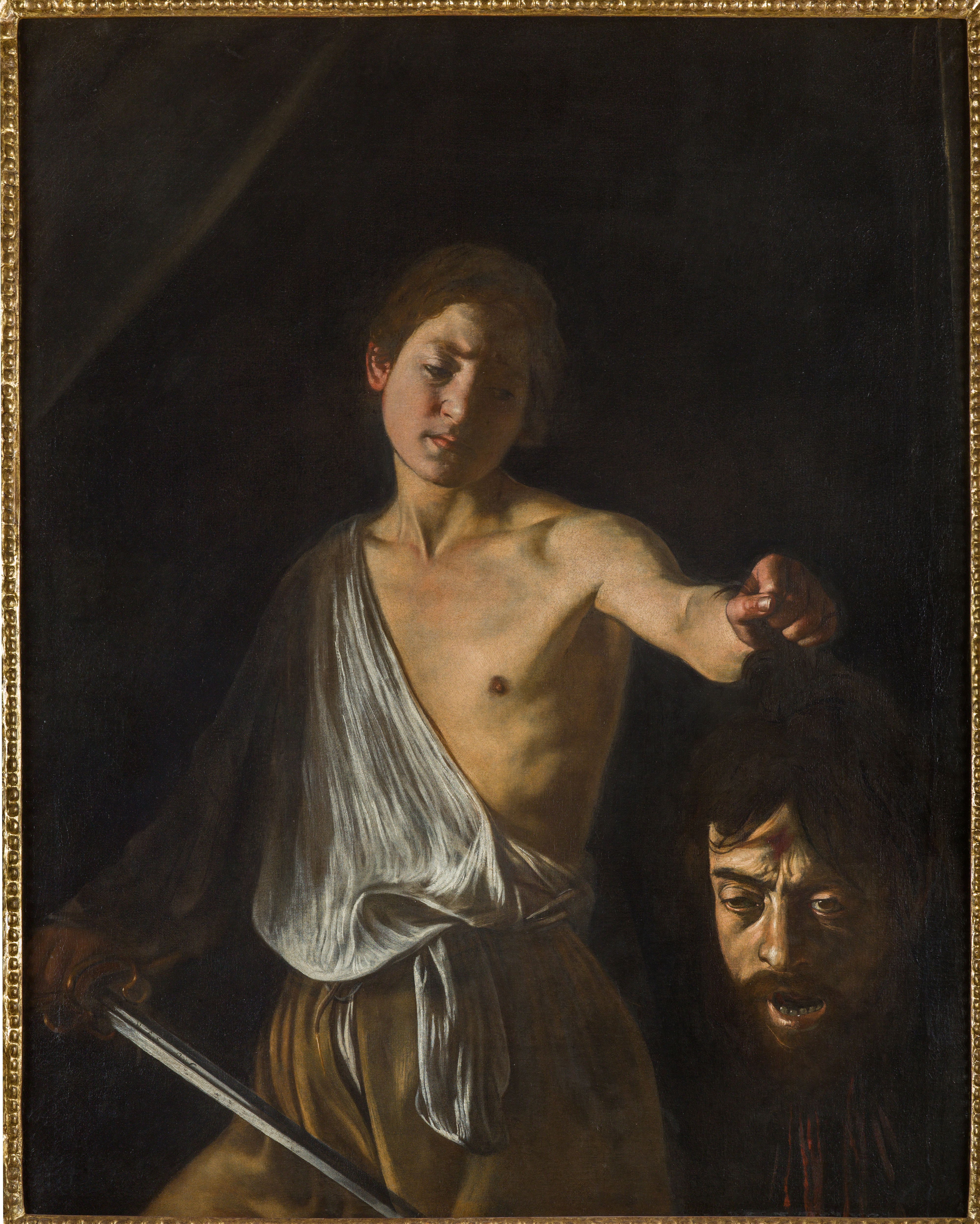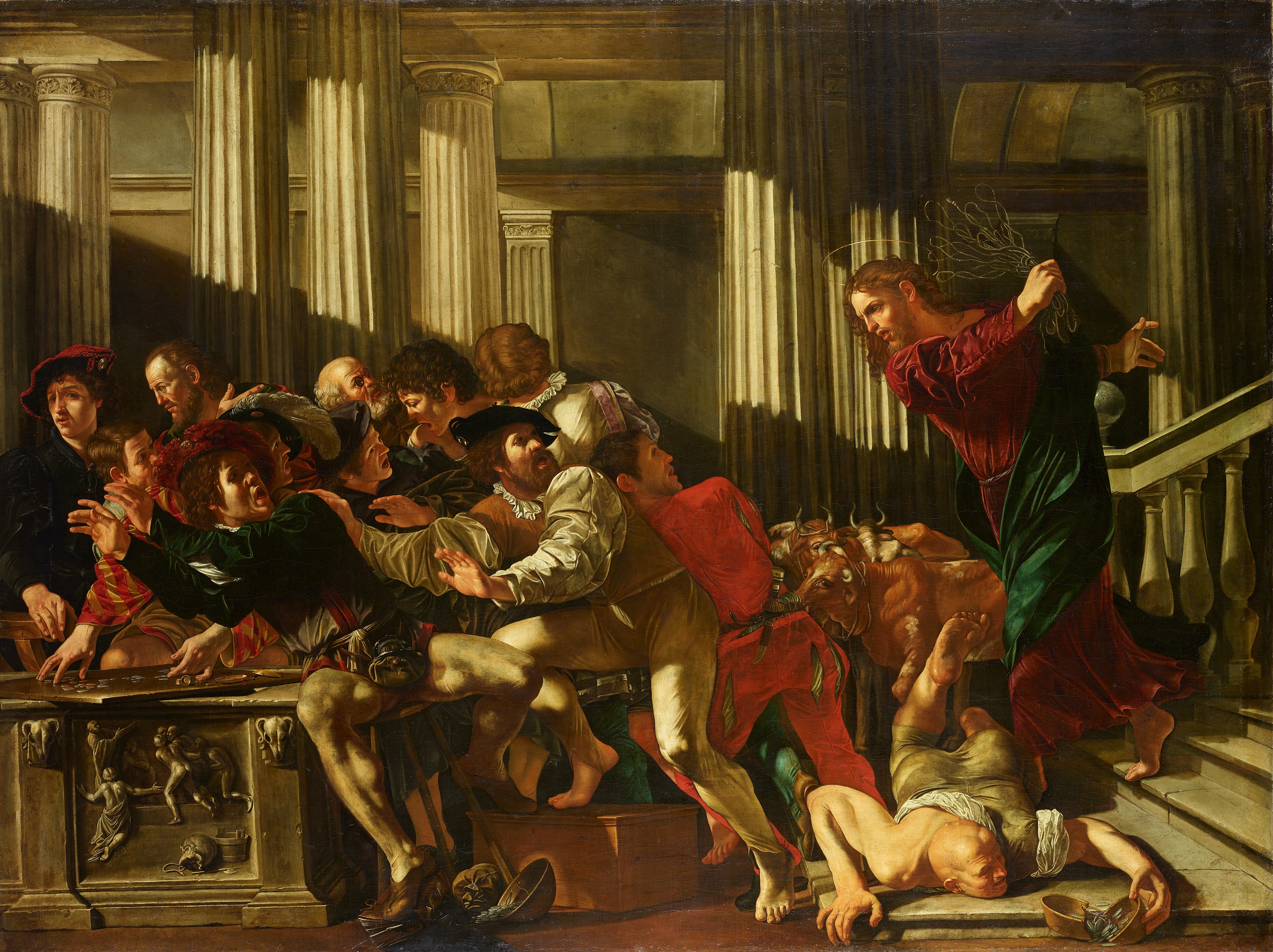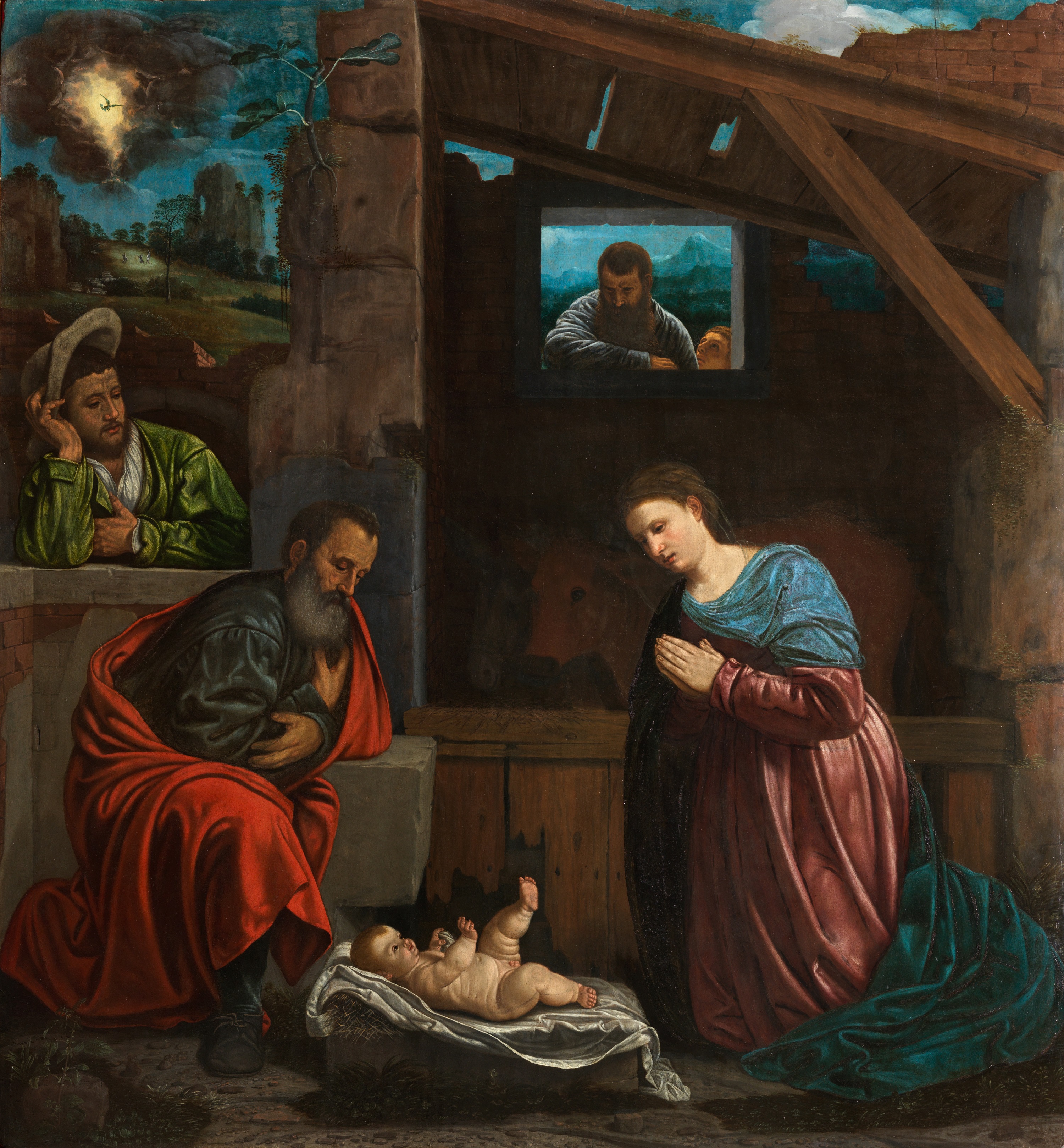Francesco Boneri known as Cecco del Caravaggio, Musical instrument maker, c.1610, Oil on canvas, London, Apsley House, Wellington Museum © Historic England Archive
But above all he was the painter who more than others brought Caravaggio’s lesson to free and nonconformist consequences, giving life to compositions that light the way towards an ante literram hyperrealism.
What is certain is that Cecco del Caravaggio, born Francesco Boneri, was the most mysterious of the pupils of the great Michelangelo Merisi, around whom there is not only the absence of sources, but also a series of bad interpretations.
In the year of Bergamo Brescia as the Italian Capital of Culture, the Accademia Carrara reopens to the public on 26 January 2023 following a major museum renovation project, with the first exhibition ever dedicated to Cecco del Caravaggio.

Michelangelo Merisi known as Caravaggio, David with the head of Goliath, 1609-1610, Oil on canvas, Rome, Galleria Borghese | Photo: © Mauro Coen
Cecco del Caravaggio. The Model Student is the title of the exhibition curated by Gianni Papi and Maria Cristina Rodeschini ready to open its doors in Bergamo from 26 January to 4 June. An impressive display embraces 41 works including 19 of about 25 known paintings by Cecco, two works by Caravaggio and artists who inspired and were in turn inspired by this fascinating painter, national and international loans from Berlin, London, Madrid, Oxford, Warsaw, Vienna, Brescia, Florence, Milan, Rome.
Intolerant of rules, atypical, destined to arouse contrasts and some enmity, the enigmatic Cecco is a nonconformist, a virtuoso brush of a painting that is implacable in the definition of shapes, contours, in color, free of censoring fears, explicit in the erotic references and in the homosexual messages.
Roberto Longhi considered him “one of the most notable figures of Nordic Caravaggism”, where that “Nordic” is now understood as relating to Northern Italy, and no longer to Europe.

Francesco Boneri known as Cecco del Caravaggio, Expulsion of the merchants from the temple, about 1613-1615, Oil on canvas, Berlin, Gemäldegalerie
The apprenticeship in Caravaggio’s studio must have been very different from that of the Florentine or Roman workshops. In Merisi’s workshop the students, almost without rules, learned to paint by observing the master, representing the models from life, intertwining the craft with life experiences. So the “Francesco apprentice” or “his Caravaggino” or even “Francesco known as Cecco del Caravaggio” in the “schola” of the master together with Ribera, Spadarino and Manfredi, poses as a model for at least six paintings by Merisi, including St. John Baptist of the Capitoline Art Gallery and David with the head of Goliath of the Galleria Borghese, which will be on display at the Accademia Carrara.
The exhibition itinerary will flank authors such as Merisi and Savoldo, from whom Cecco drew inspiration, with a series of artists close to him, from Valentin de Boulogne to Pedro Núñez del Valle, through loans from mainly public collections such as the Uffizi Galleries and Palazzo Pitti in Florence, the Prado Museum in Madrid, the Kunsthistorisches Museum in Vienna, the Ashmolean Museum in Oxford. For the first time, the visitor will be offered a transversal and complete look at Cecco’s work, bringing together masterpieces that have proved to be fundamental in the reconstruction of the author’s corpus, such as Expulsion of merchants from the temple on loan from the Gemäldegalerie in Berlin, a canvas that reveals adherence to the great masters.
On one side there is Caravaggio, in the animated composition and in the expressions of terror of the figures, on the other, Savoldo, in the clear atmosphere, in the pure colours, the flattened drapery. If the painter’s face appears recognizable thanks to works such as the Portrait of a young man with a lettuce collarcoming from the Uffizi Galleries – Palazzo Pitti in Florence, his pictorial language becomes increasingly recognizable in the tormented execution of the drapery, in the almost phosphorescent whites, in the precise definition of the eyes and eyelids and in the clear design of the lips engaged in a song, to hint at a sigh, to release a stifled cry.

Giovanni Gerolamo Savoldo, Adoration of the Shepherds, Brescia, Tosio Martinengo Art Gallery
The exhibition will also devote space to the comparison between Cecco and the research of Evaristo Baschenis, the priest-painter of Bergamo origins, widely represented in the collections of the Carrara Academy, and indebted to Boneri’s masterful lesson in the realism of the still life pieces as well as in the rendition of the musical instruments of the Fabbricanti series.
With Cecco del Caravaggio. The Model Studentthe first exhibition to occupy the new spaces of the museum dedicated to temporary projects, the Carrara returns attention to those “painters of reality” of Lombard origin to whom we seek to recognize their rightful role in the European artistic panorama of their time.
![]() Read also:
Read also:
• Towards 2023. The Carrara Academy is being renewed
• A story of generosity and passion: the Carrara Academy of Bergamo

